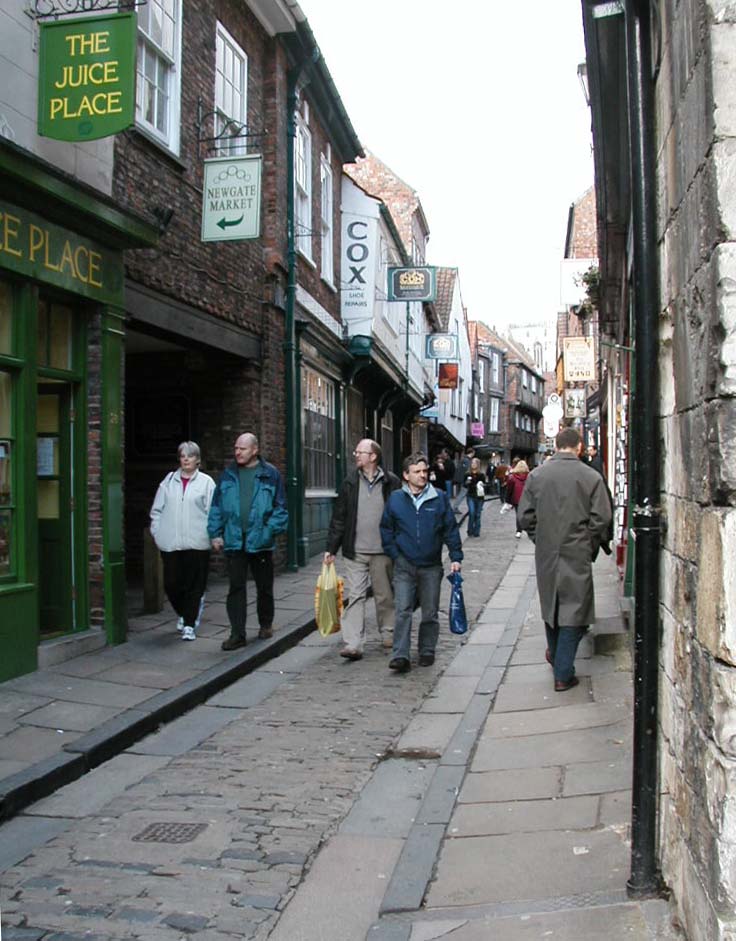
York was the perfect place to start our travels in Northern England. There is so much history in York, I kept expecting to see people in period clothing to popping out of doorways. The artifacts begin with the time the Romans occupied the area but the most interesting parts of the city are medieval. Designed for horse and foot traffic, some of the streets are so narrow, that even if cars were allowed, they would barely fit. The city center is a lively place, even in March, but one of the great benefits of off-season travel is the lack of crowds. |
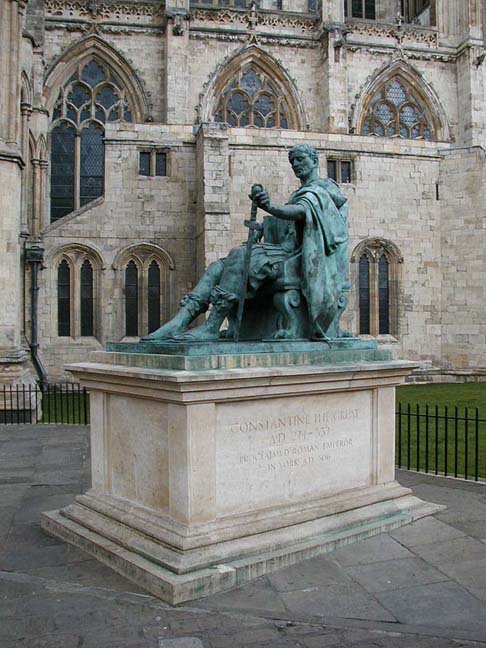
The first recorded settlement of York was in 71 AD when the Romans dug a ditch in the area where the rivers Ouse and Foss converge, built up a large turf and clay embankment, and set about constructing timber walls and towers. The city grew in importance and in 306, Constantine was proclaimed emperor there. By then, the town walls were reconstucted of stone and the base of some of those old stone walls still exist both in the walls. This is a statue of Constantine beside York Minster. |
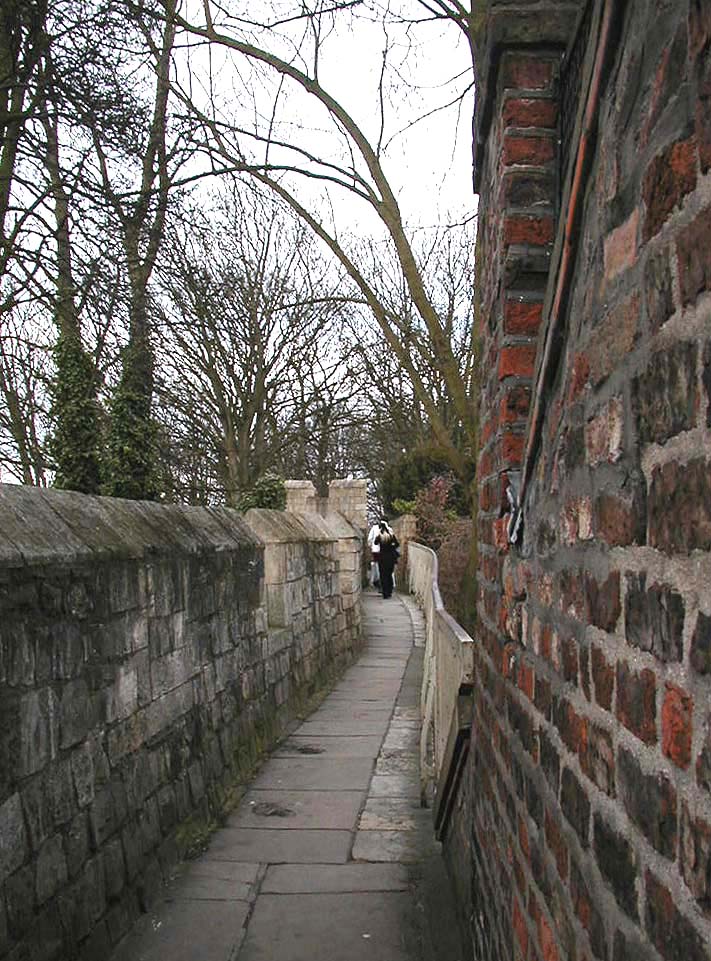
The walls that surround the center city are 2 miles long, the longest city walls in England. You can walk all the way around, enjoy beautiful views and see the city from the perspective of a guard of times past. The long history of the walls include burning, destruction and rebuilding, but in 1800, the last attempt to destory them was thwarted and now they are protected as a national monument and are cared for by the National Trust. They are actually double walls with rubble in between, so they tend to migrate away from each other. A project is underway to install steel bars to hold them together. |
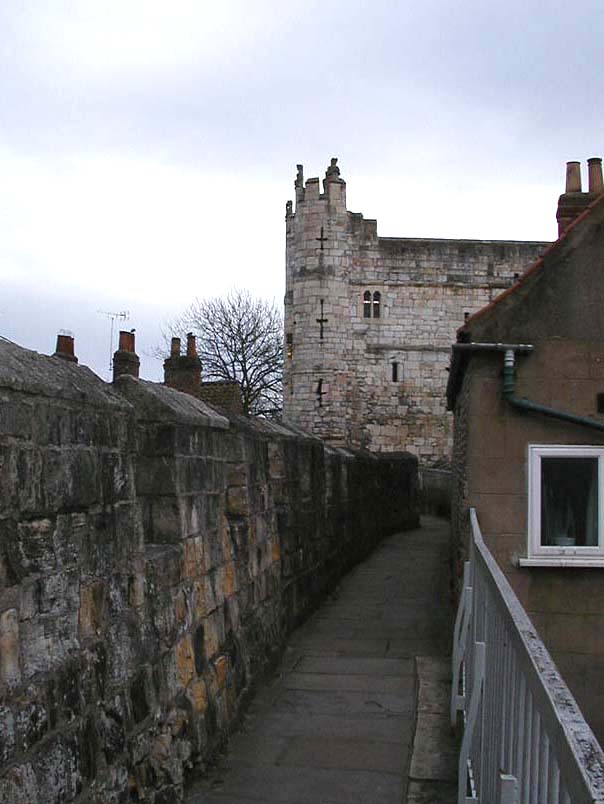
In the walls are four gateways called bars. This is a suitably ominous picture of Monk Bar, a 14th century, four story ediface that could stand as a stronghold in a time of seige. It's porcullis (the huge spiked wooden gate that was raised up and down to admit or deny entrance) is the only one in the four bars still operational. The corners in the two towers were tiny, scary prison cells, so small, it was impossible to lie down. Monk Bar now houses a museum dedicated to vindicating Richard III from the scurrilous accusations Shakespeare makes against him in his play, Richard III. |
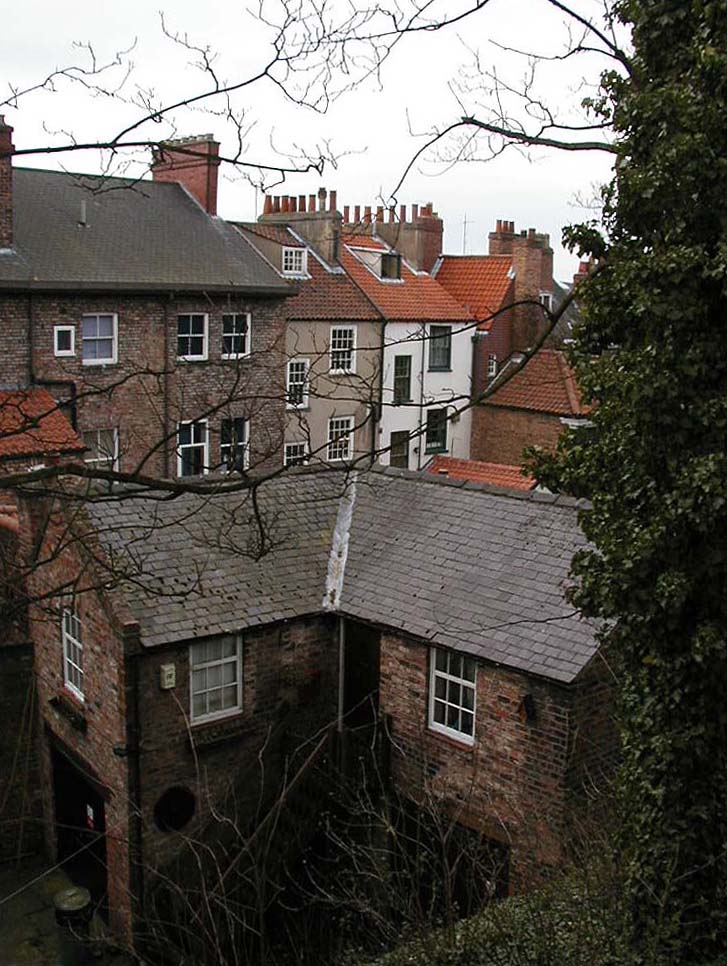
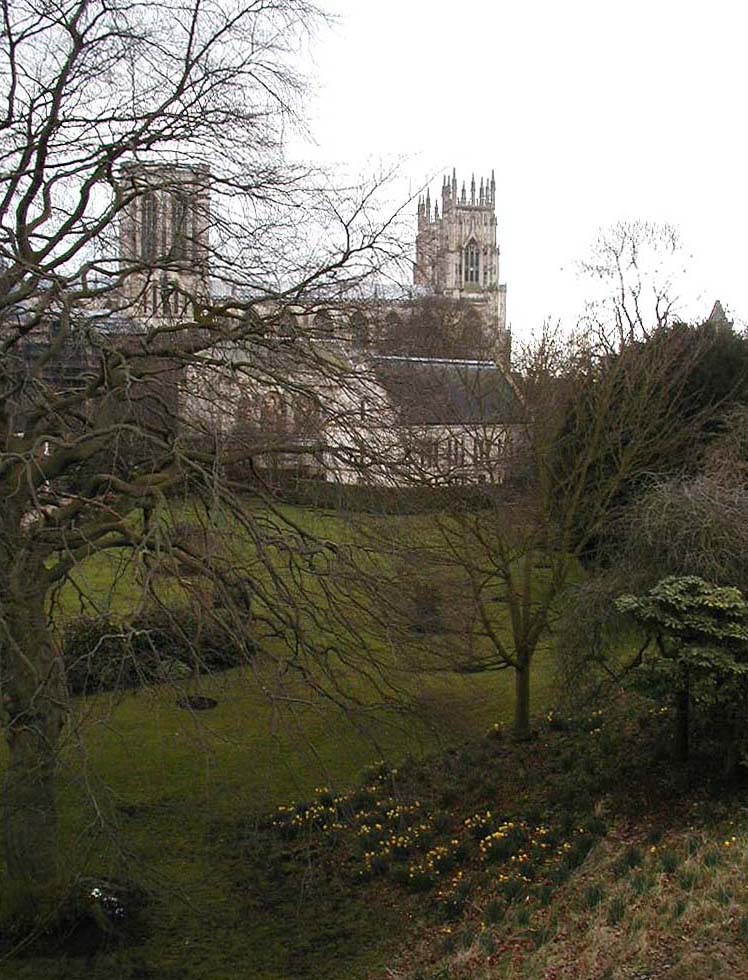
|
Here are two views from the wall, one a typical view into the city, the other a look across the gardens of York Minster. |
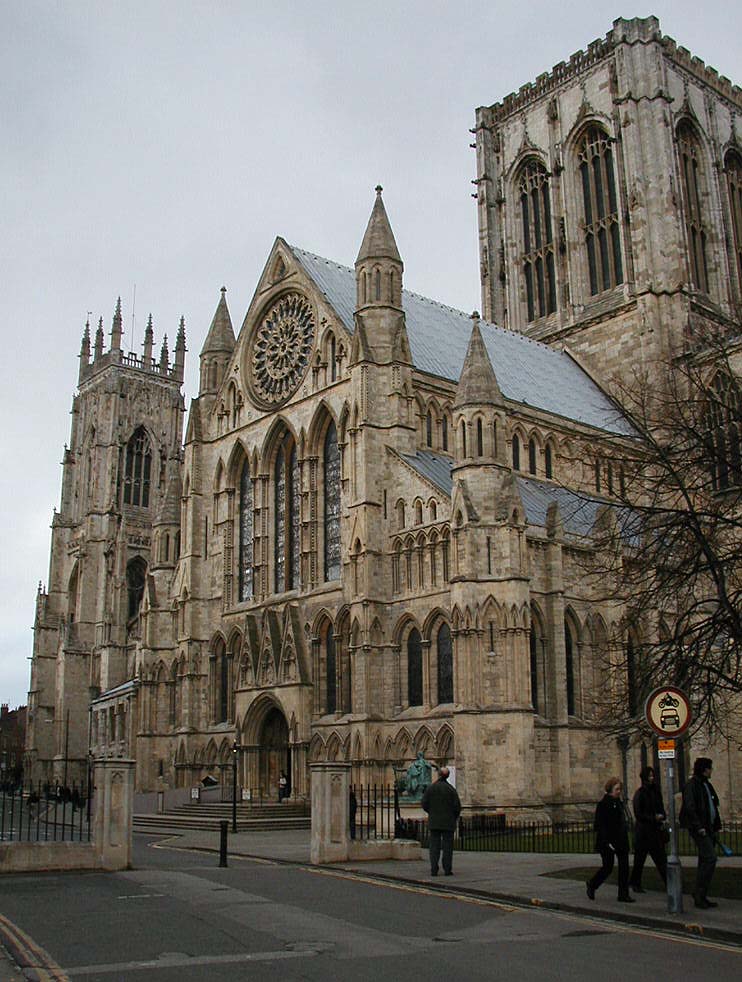
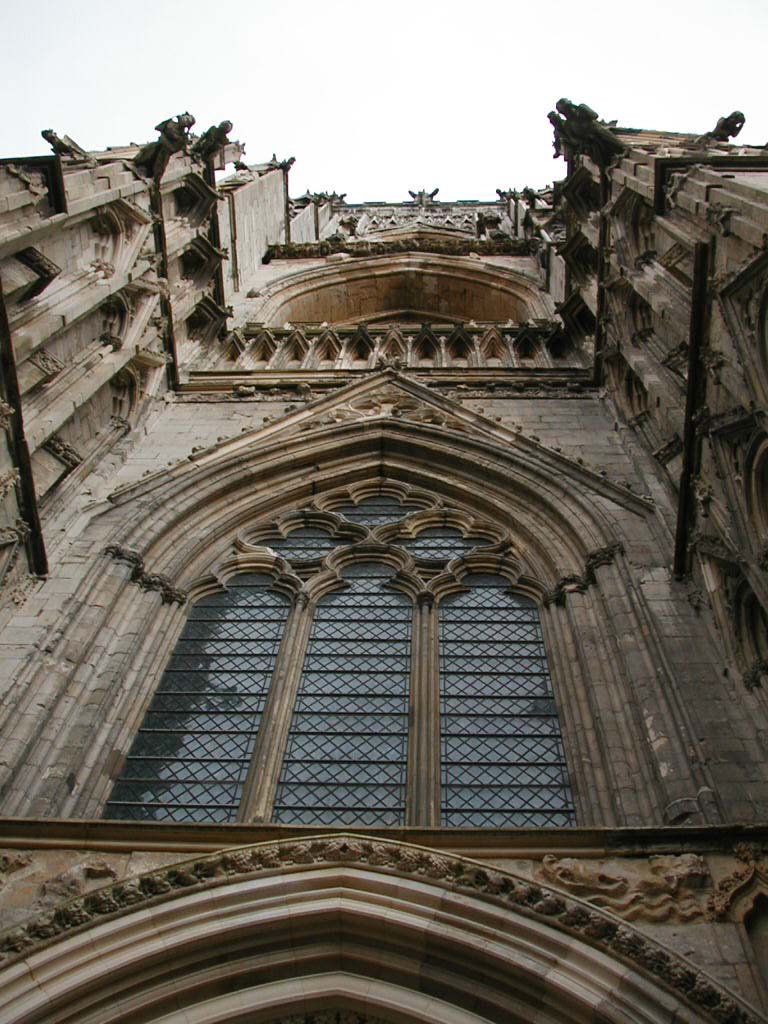
|
The York Minster, which looks like an enormous sand castle, is the largest cathedral in northern Europe. It is hard from these pictures to get an idea just how huge it is. It is built on the site of an early Roman chuch, evidence that Christianity was tolerated by the Romans. Construction of the church as it stands today was begun around 1220 and it took over 250 years to build. |
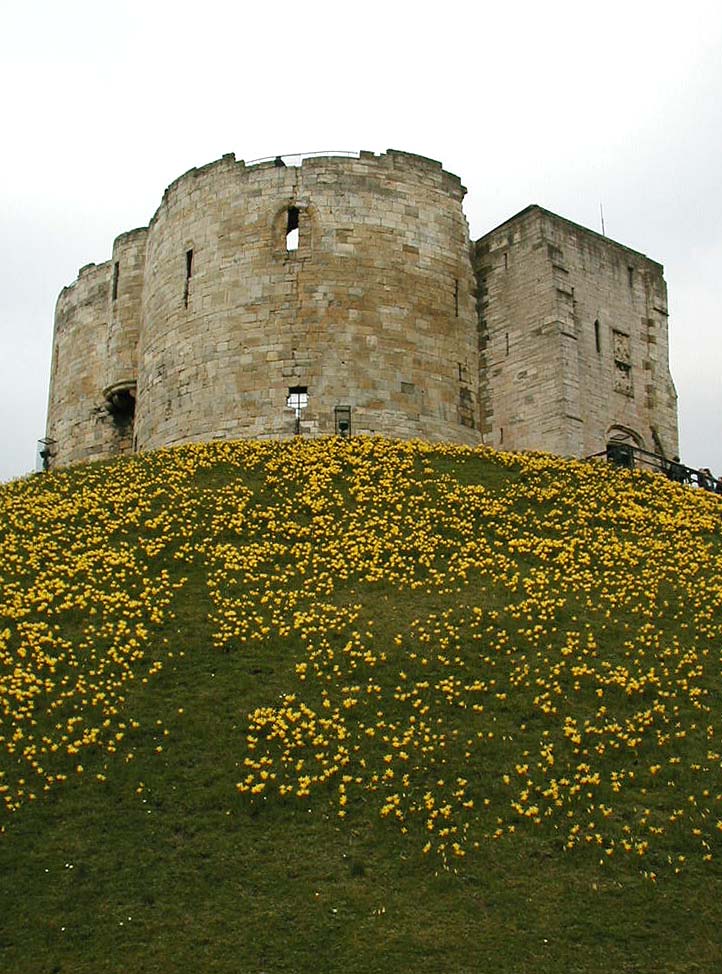
Clifford's Tower was another place that caught our imagination. In 1068, William I built a wooden castle on the site, mounding the earth to make the hill. The day we visited, the hill was a vision, covered in vivid yellow daffodils. The castle's history includes inevitable the destructions and rebuildings, the most tragic event happening in 1190, when half of the city's Jewish population took refuge from persecution there. They and the wooden tower were burned. Later, in the 13th century, it was rebuilt in stone by Henry III. The tower became known as "Clifford's Tower" when in 1322, Edward II hung the rebel, Lord Robert Clifford, in chains from the walls. |
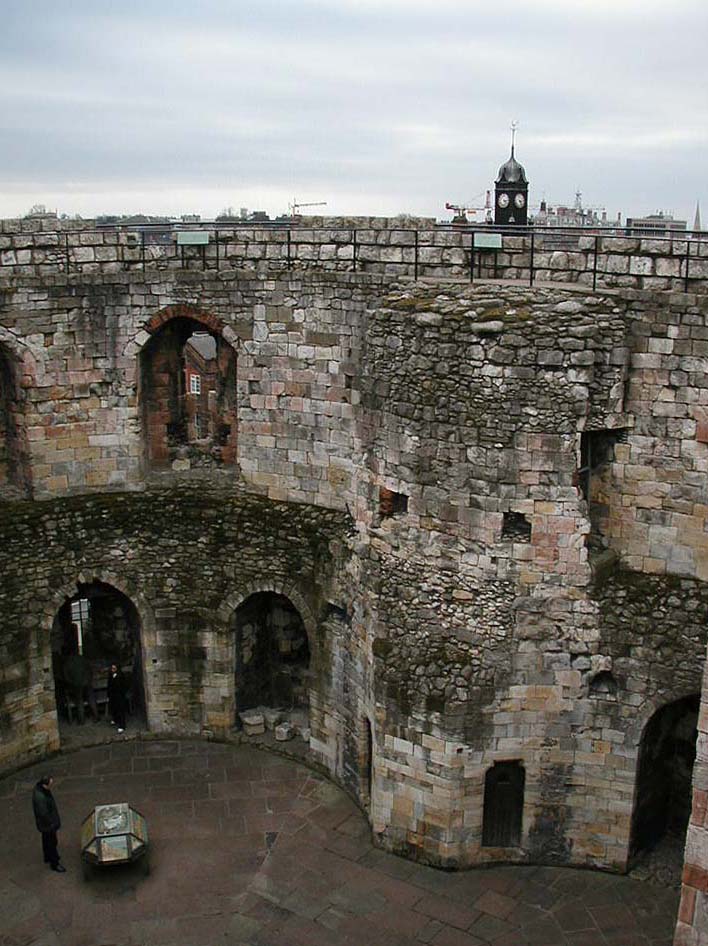
When you look across the inside of the tower, the red arched area is where a second story fireplace was. The big square holes in the center right were the support beams of the second floor rested. Clifford's Tower was later used as a prison, then as an execution hall, but when we walked through, it was easy for me to imagine the castle as a place where people lived their lives. This feeling was reinforced by a visit to the York Castle Museum across the way, with recreations of parlours from different times in history, period costumes, and Victorian and Edwardian street scenes. Visiting York makes history come alive.From York, we traveled to Ripon for a visit to the mystical Fountains Abbey. |
Return to the England trip home page. |
|
|